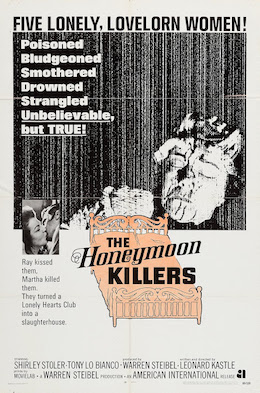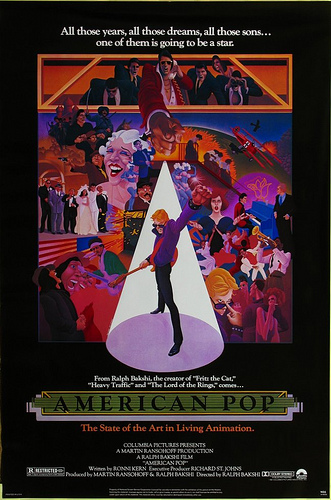Welcome to Late Night Retro Television Reviews, a feature where we review some of our favorite and least favorite shows of the past! On Thursdays, I will be reviewing Highway to Heaven, which aired on NBC from 1984 to 1989. The entire show is currently streaming on Freevee and several other services!
This week, Jonathan encourages everyone to violate federal law.
Episode 1.22 “An Investment In Caring”
(Dir by Michael Landon, originally aired on March 13th, 1985)
Helen Spencer (Eileen Heckart) is an annoying old busy body who lives in one of those charming city neighborhoods that are only found on shows like Highway to Heaven. Even since her husband died, she has kept herself active by working as a cleaning lady at the Halstead Corporation, which is the same company that wants to not only tear down her neighborhood but also turn the local cemetery into a condo subdivision.
Fortunately, Helen’s new boarders just happen to be Jonathan Smith and Mark Gordon. Jonathan encourages Helen to rally the neighbors to take a stand against Halstead. He also encourages Paul Tarsten (Dane Clark), who was recently laid off from Halstead for being too old, to help Helen out. With Jonathan’s guidance, Helen goes through the trash at Halstead, finds some stock reports that really should have been put through a shredder, and then use that insider information to buy and sell a bunch of stock until soon, she and her friends are the majority stockholders.
“Only in America,” Ms. Zabenko (Elsa Raven) exclaims not once but five times, just in case you were wondering how heavy-handed this episode was.
Helen is able to save her neighborhood, save the cemetery where her husband is buried, and also take over the company. She also finds hints of romance with Paul, who is himself a widower. Their mission accomplished, Jonathan and Mark leave town….
…. which is good because I don’t see anyway that Paul, Helen, and Ms. Zabenko aren’t eventually going to end up in federal prison. Just about every piece of advice that Jonathan gave Helen led to her doing something illegal, from insider trading to corporate espionage to stealing from the office. Only in America, Ms. Zabenko? In America, we have laws against stock market manipulation.
This episode just irked me. Whenever people talk about Highway to Heaven being an unrealistic and cheesy show, this is the type of episode that they’re thinking of. It takes a lot to make a heartless corporation sympathetic but the overacted and rather smug neighborhood activists in this episode managed to do just that. In previous episodes, Jonathan and Mark have appealed to businessmen to get them to change their ways. In this episode, the head of Halstead isn’t given that opportunity. Instead, Jonathan — acting on authority from GOD — encourages a bunch of people with no business experience and no way of knowing any better to commit a bunch of federal crimes. Helen takes over the company but what does Helen know about running a company? When Halstead goes bankrupt, a lot of people who had nothing to do with the former CEO’s plans will end up losing their jobs. Way to go, God.
Finally, I should note that this episode begins with Helen’s former boarder telling her that he’s moving out because a voice in his head told him to move to Alaska. It’s only because he leaves that Helen has the room to rent to Jonathan and Mark. So, basically, promoting insider trading wasn’t enough for Jonathan. He also had to ruin some poor schmuck’s life by telling him to move to a state that he knows nothing about. Not since the Book of Enoch has an angel behaved so unethically.


 Long before South Park, The Simpsons, and Pixar, there was Ralph Bakshi. At a time when animation was considered to only be good for children, Bakshi shocked audiences and critics with animated films that dealt with mature themes and were definitely meant for adults. His first two films, Fritz the Cat (1972) and Heavy Traffic (1973), was the also the first two animated films to receive an X-rating. Bakshi satirized racism in the controversial Coonskin (1975) and Bakshi’s adaptation of The Lord Of Rings (1978) beat Peter Jackson’s by 23 years. It was after the critical and commercial disappointment of the heavily flawed but interesting Lord of the Rings that Bakshi decided it was time to make a film that would be more personal to him. The end result was American Pop.
Long before South Park, The Simpsons, and Pixar, there was Ralph Bakshi. At a time when animation was considered to only be good for children, Bakshi shocked audiences and critics with animated films that dealt with mature themes and were definitely meant for adults. His first two films, Fritz the Cat (1972) and Heavy Traffic (1973), was the also the first two animated films to receive an X-rating. Bakshi satirized racism in the controversial Coonskin (1975) and Bakshi’s adaptation of The Lord Of Rings (1978) beat Peter Jackson’s by 23 years. It was after the critical and commercial disappointment of the heavily flawed but interesting Lord of the Rings that Bakshi decided it was time to make a film that would be more personal to him. The end result was American Pop.